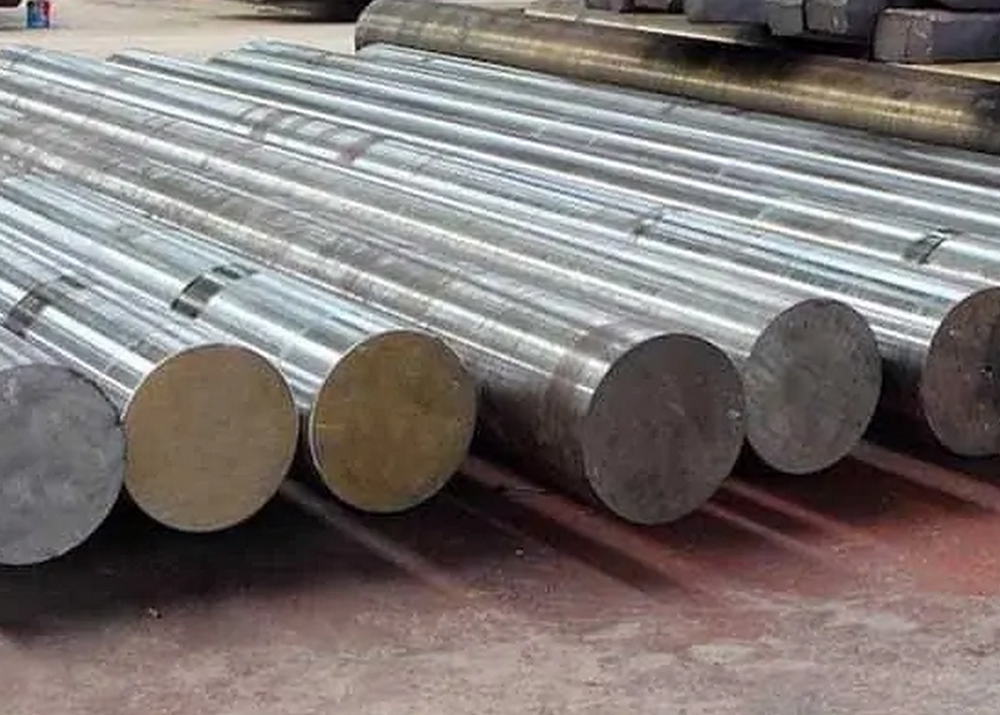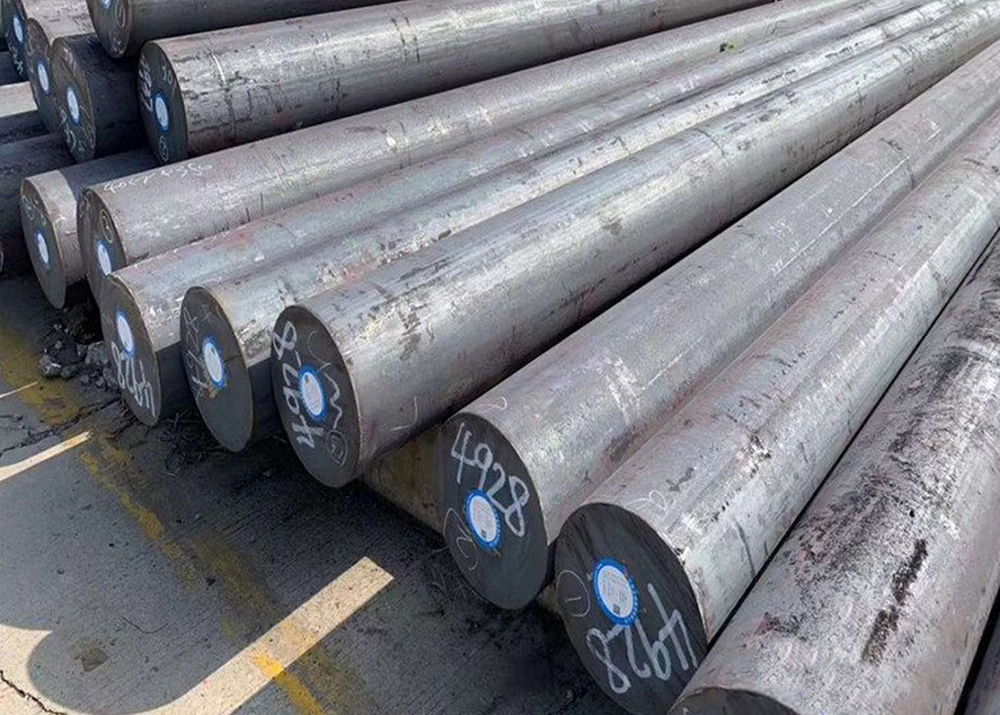Chemical Composition
|
C(%) |
Si(%) |
Mn(%) |
P(%) |
S(%) |
Cr(%) |
Ni(%) |
Cu(%) |
|
0.42~0.49 |
0.65 ~ 1.10 |
0.75 ~ 1.20 |
≤0.035 |
≤0.040 |
0.15~0.25 |
0.15 ~ 0.30 |
≤0.25 |
Mechanical Propoerties
|
Yield Strength |
Tensile Strength |
Elongation δ5
(%): |
Reduction |
Impact energy |
Impact toughness |
Hardness |
|
≥ 758(85) |
≥ 965(95) |
≥ 14.5 |
≥ 45 |
≥ 41 |
≥ 39(4) |
≥ 285 HB |
Forging
Preheat the steel carefully, then raise the temperature to
1150-1200°C for forging. Do not forge below 850°C. AISI 4145 has good forging
characteristics but care must be taken when cooling the steel due to its
susceptibility to cracking.
Heat Treatment
Annealing: Heat the steel slowly to 800-850°C and allow enough time for the steel to be thoroughly heated. Cool slowly in the furnace to 480°C followed by air cooling.
Hardening: AISI 4145 steel is usually supplied ready heat treated to 30-36HRc. If further heat treatment is required annealed AISI 4145 should be heated slowly to 840-875°C and after adequate soaking at this temperature quench in oil. Temper as soon as the tools reach room temperature.
Tempering: Heat carefully to a suitable temperature selected by
reference to a tempering chart or table (usually between 550-700°C, soak at the
temperature for 2 hours per 25mm of ruling section, then allow to cool in air.
Tempering between 250-375°C is not advised as tempering within this range will
seriously reduce the impact values of this steel.
Applications
AISI 4145H is the upgraded type of AISI 4145. AISI 4145H has improved
hardenability and is commonly used in the high strength condition with min.110
KSI yield and suitable for downhole drilling tools such as subs, x-overs, drill
collars, pup-joints and fishing tools. General engineering applications include
components exposed to heavy strain, such as shafts, gear, bolts etc. AISI 4145H
can also be used in hardened condition as machine parts exposed to heavy wear.




